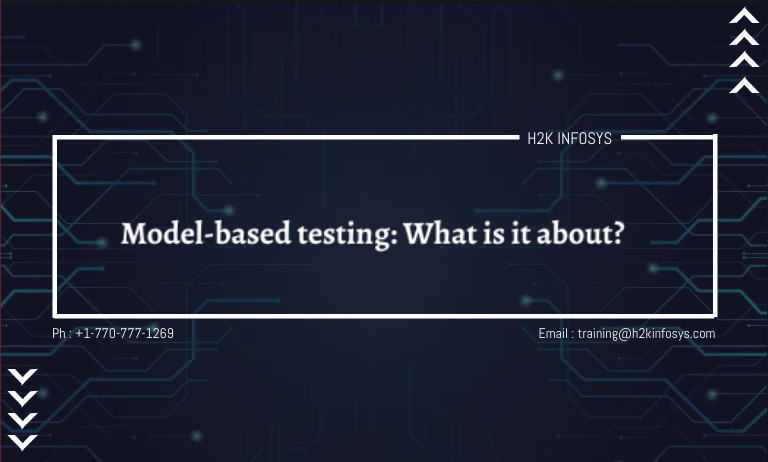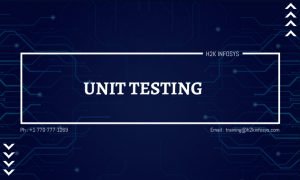Model-based testing (MBT) is an advanced approach to software testing that leverages formal models to represent the desired behavior of a system under test (SUT). Unlike traditional testing methodologies that rely heavily on manual scripting and predefined test cases, MBT introduces a systematic and automated way of generating, executing, and analyzing test cases derived directly from a model. This method improves efficiency, ensures coverage, and enhances the quality of software systems.
Model based Automation testing can generate test cases automatically from applications that are very complex. It provides add-in benefits: scalability, robustness, and budget-friendly. The test cases are generated at early stages by considering the requirements specification or design. If the source code is used for generating test cases, the defects are unidentified. The popular tools used for MBT are Selenium and gauge. This technique is applied in the Microsoft company for testing. The Microsoft MBT tool is called Spec Explorer. You can explore more about Spec Explorer on this page:
Model based testing is software testing where the run time behavior of the software will be checked against predictions that are made by the model. The model can be defined as the description of the system behavior, which describes in terms of input sequences, actions, etc.
What Is Model Based Testing?
Model based testing uses models to represent the functional requirements or expected behavior of a system. These models serve as the basis for creating test cases, which are then used to verify if the system behaves as intended.
A model in this context can be defined as an abstract, formal representation of a system’s functionality, structure, or behavior. Common types of models include:
- Finite state machines (FSMs): Representing states and transitions of a system.
- Decision tables: Mapping inputs to expected outputs.
- State transition diagrams: Visualizing how a system moves from one state to another based on specific inputs.
- Unified Modeling Language (UML) diagrams: Standardized visual representations of system components and interactions.
Once the model is created, tools can automatically generate test cases by exploring the model’s structure. This ensures comprehensive testing and reduces manual effort.
There are a number of models available and it’s been described differently based on aspects of system behavior. Let us consider an example:
- Data flow
- Control flow
- Dependency graphics
- Decisions tables
- State transition machines
Key Features of Model-Based Testing
- Automated Test Case Generation: Test cases are automatically derived from the model, reducing the risk of human error in test design.
- Systematic Coverage: Models can ensure complete coverage of system behavior, including edge cases that might be overlooked in manual testing.
- Traceability: MBT allows for better traceability between requirements, models, and test cases, ensuring alignment with the intended functionality.
- Reusable Artifacts: Models can be reused across different projects or phases of development, making the approach cost-effective in the long term.
- Early Detection of Defects: Since models are built from requirements, inconsistencies or gaps in requirements can be identified early in the software development lifecycle.
Types of model-based testing:
Offline/prior: test case is collection of test steps, generation of test suites before it’s been executing
Online/on -the fly: this will generate test suites when the execution is been processed
Different models in testing:
It is important to understand some of the models, which is been listed:
Finite state machine: Finite state machine will help testers to assess the result which is depending on the input selected. There will be different combinations of inputs that will result in the corresponding state of the system. This will have a specific state and also a current state governed by a set of inputs from testers.
Let us consider an example:There is a system that will allow employees to get logged in to the application now. The current state of the employee is out and it has become in once he signs in to the system. When it is in the state, the employee will view the print scan document in the system.
Statecharts: this is the extension of finite state machines which can be used for complex and also real-time systems, these are used to describe different behaviors of a system. This will have a definite number of states, behavior is analyzed and represented in the form of events.
Unified modeling language: this will include a set of graphic notation techniques which will create visual models which will describe the complicated behavior of the system, it will have notations some of them are:
- Activities
- Actors
- Business process
- Components
- Programming language

Challenges of Model-Based Testing
High Initial Investment: Developing models and acquiring MBT tools require upfront investment in time and resources.
Steep Learning Curve: Teams need training to develop and maintain models, as well as to effectively use MBT tools.
Tool Dependency: The effectiveness of MBT relies heavily on the capabilities of the tools used, which may have limitations in handling certain systems.
Complexity in Model Creation: Creating accurate and detailed models for complex systems can be challenging and time-consuming.
Requirement Changes: Frequent changes in requirements can necessitate updates to the model, increasing maintenance overhead.
Benefits of Model-Based Testing
- Efficiency: Automating test case generation and execution saves significant time and effort compared to manual testing.
- Improved Coverage: Models provide a structured approach to testing, ensuring even complex system behaviors and edge cases are covered.
- Scalability: MBT is particularly effective for large and complex systems, where manual testing becomes cumbersome and error-prone.
- Early Feedback: Since models are derived from requirements, testing can begin early in the development cycle, reducing the cost of fixing defects later.
- Cost-Effectiveness: Over time, MBT reduces costs associated with test design, execution, and maintenance by leveraging reusable models and automation.
- Consistency: Automated test generation ensures uniformity in test coverage, minimizing variations caused by human error.
Testers will build mental models during the testing, those models will be transformed into the models on the papers, this will help testers to achieve readability and also usability. Model-based testing will be the new approach so software which is shown below:
Model-checking: This will be used for test case generation; this was developed as a technique to check if the property specification is valid in the model. When it’s used for the testing model of the system under test and also a property to test will be provided to the model checker.

Tools for Model-Based Testing
Several tools support model-based testing by automating the generation and execution of test cases. Popular tools include:
- Spec Explorer: A tool for model-based testing in .NET environments.
- Conformiq: An advanced MBT tool that supports multiple modeling languages and automated test generation.
- Tosca Testsuite: A robust testing suite with model-based capabilities.
- GraphWalker: An open-source MBT tool focused on state machine and graph-based testing.
Each tool has its strengths and limitations, and the choice depends on the project’s specific needs, the complexity of the system, and budget constraints.
Future of Model Based Testing
The growing complexity of software systems and the demand for faster development cycles are driving the adoption of MBT. Key trends shaping the future of MBT include:
- Integration with AI and Machine Learning: AI-driven tools can improve model creation, optimize test case generation, and predict system behaviors.
- Shift-Left Testing: MBT aligns with the shift-left approach, allowing early testing during the design phase.
- Continuous Testing in DevOps: MBT fits seamlessly into DevOps pipelines, supporting continuous integration and delivery (CI/CD).
- Broader Industry Adoption: As tools become more accessible and teams gain expertise, MBT adoption is expected to expand across industries.
Conclusion
Model-based testing is a transformative approach that addresses many of the challenges faced by traditional testing methodologies. By leveraging formal models, MBT ensures systematic, automated, and comprehensive testing, improving software quality and reducing time-to-market.
While there are challenges associated with its adoption, the long-term benefits far outweigh the initial investments. As software systems grow in complexity, embracing MBT will become essential for organizations aiming to stay competitive in the ever-evolving tech landscape.
If you’re looking to implement MBT in your projects or want to learn more about it, consider enrolling in professional MBT or QA training programs to gain hands-on expertise and accelerate your career in software testing.
Questions
- What is model-based testing? Explain briefly


























One Response
1.What is model-based testing? Explain briefly.
a software testing technique, where the test cases to be executed are taken from a model which covers the entire functional aspect of the system which is under the test. It is an approach where test cases are automatically generated from application models